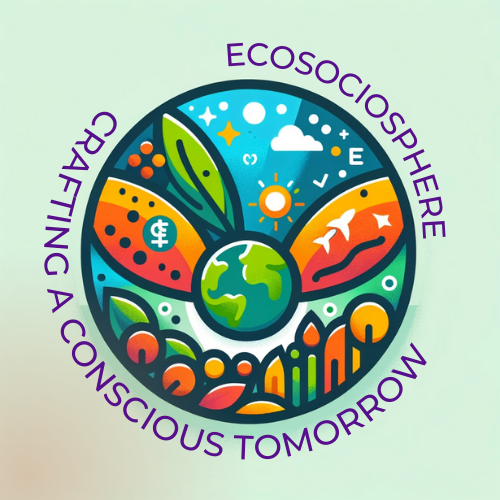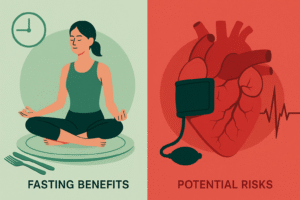Fun Fact: Just 90 minutes of walking in nature can reduce activity in the part of your brain linked to depression.
In an age where screens dominate our attention and concrete defines our surroundings, the idea that a simple walk in the woods can literally rewire your brain may sound far-fetched. But the science is in, and it’s astonishing: Walking in nature is not just good for your body—it’s reshaping your brain in ways that modern medicine can’t always replicate.
Welcome to the wild remedy.
Why Your Brain Craves Green
Let’s start with a question: When was the last time you heard birdsong without a traffic jam in the background? The human brain evolved in natural environments—open meadows, forests, riversides—not among honking horns, fluorescent lights, or endless email notifications.
When you walk through nature, your brain isn’t just enjoying the scenery. It’s entering a healing mode. Trees, water, birds, and sunlight act like a cognitive balm, calming overactive brain circuits and stimulating areas related to empathy, memory, and creativity.
This isn’t just poetic theory. It’s neuroscience.
The Brain Science Behind a Walk in the Woods
A groundbreaking 2015 study from Stanford University found that participants who walked for 90 minutes in a natural setting showed significantly reduced activity in the subgenual prefrontal cortex—a brain region associated with rumination, the repetitive cycle of negative thoughts that often fuels depression and anxiety.
Urban walkers? No such luck.
A separate study featured in the journal Frontiers in Psychology revealed that taking just a 20-minute walk in nature can boost working memory by as much as 20%. And that’s not all:
- Exposure to natural environments increases alpha wave activity in the brain, which is linked to relaxation and mental clarity.
- Time in nature stimulates neurogenesis (the creation of new brain cells), especially in the hippocampus, which plays a critical role in memory and emotional regulation.
- Levels of cortisol (a stress hormone) drop significantly after nature exposure, and heart rate variability improves—a sign of enhanced emotional resilience.
In other words, walking in nature is like a spa day for your brain.

Case Studies: Nature’s Impact on Real Lives
Veterans and PTSD (Post-Traumatic Stress Disorder):
Programs like Project Healing Waters in the United States use fly fishing and riverside walking as therapy for veterans with PTSD. Many report reduced flashbacks and better sleep, without relying solely on medication.
Japan’s Forest Bathing Tradition:
Known as Shinrin-yoku, or “forest bathing,” this practice encourages immersing oneself in forest environments. Japan’s Forestry Agency officially promotes it for its scientifically backed health benefits, including lower blood pressure, improved mood, and strengthened immune response.
Kids with ADHD (Attention-Deficit/Hyperactivity Disorder):
A 2004 study found that children with ADHD who spent time in green outdoor spaces showed fewer symptoms and improved concentration compared to those in urban settings.
Elderly Populations:
Walking paths surrounded by greenery in nursing homes or community centres have been linked to slower cognitive decline, reduced loneliness, and improved quality of life in seniors.
Why Your Brain Hates the City
While cities are hubs of opportunity and innovation, they are also high-stress environments. Constant stimulation—sirens, crowds, traffic, screens—can overstimulate the amygdala, the brain’s fear and stress centre.
Studies have found that urban dwellers have a 21% higher risk of anxiety disorders and a 39% higher risk of mood disorders compared to rural residents. City life may be convenient, but it comes with a cognitive price.
Walking in nature provides your brain with “soft fascination”—a term coined by environmental psychologists to describe the effortless attention we give to flowing water, rustling leaves, or birds in flight. This gentle focus allows the brain to rest and reset—unlike scrolling Instagram or responding to work emails, which demand “directed attention” and often lead to mental fatigue.
The Nature-Walk Prescription
You don’t need to live near a forest to benefit. Here’s how to make walking in nature a daily habit that transforms your mind:
Green Your Commute: Walk through a park or tree-lined street instead of busy roads.
Lunch Break Escape: Spend even 10–15 minutes in a nearby garden or green space.
Digital Detox Walks: Leave your phone at home or in your pocket. Just walk and observe.
Weekend Nature Trips: Explore local trails, lakes, or botanical gardens.
Mindful Walking: Don’t rush. Focus on the colours, sounds, and smells around you.
Even a View Can Help
Can’t get outside? Studies show that even viewing images of nature or listening to natural sounds like flowing water or bird calls can activate calming neural pathways. So if your workspace is a grey cubicle, bring in plants, nature posters, or an ambient sound machine.
What’s Happening at the Cellular Level?
The benefits of walking in nature aren’t just psychological—they’re biological.
- Nature increases production of brain-derived neurotrophic factor (BDNF), which supports neuron growth and cognitive function.
- The scent of pine trees contains phytoncides, which boost immune function and reduce anxiety.
- Sunlight increases serotonin levels, improving mood and focus.
It’s almost as if the natural world evolved to keep our minds healthy—and we’ve just forgotten to visit.
Tech Meets Trees: The New Frontier
Startups are taking note of nature’s neurological magic:
- Calm (a mental wellness app) features immersive forest walk soundscapes.
- Mindfulness-based nature therapy programs are being introduced in urban corporate retreats to fight burnout.
- Biophilic design—a growing trend in architecture—incorporates natural elements like plants and sunlight into offices and hospitals to improve well-being.
The future of mental health may involve less medication and more green space.
The Bigger Picture: Rewilding Ourselves
In a hyperconnected, overstimulated world, walking in nature is more than self-care—it’s a quiet rebellion. It’s a way to remember who we are beneath the noise. Our ancestors lived in forests and by rivers for millennia. Maybe your brain misses that.
We don’t need another app to fix our minds. Maybe we just need to take a walk outside.
Conclusion: Take It Outside
Here’s the truth: your brain isn’t built for concrete. It’s built for birdsong, breeze, and sunlight. Walking in nature isn’t a luxury—it’s a biological necessity.
If you’re feeling overwhelmed, stuck, anxious, or numb—don’t scroll. Don’t sit. Just go for a walk. Your brain will thank you, in ways science is only beginning to understand.
Author’s Note:
As someone who’s walked their way out of many a mental rut, I truly believe nature is the most underrated therapist of all. This piece is for anyone who’s been looking for healing in the wrong places. Sometimes, the solution is just beyond your doorstep.
G.C., Ecosociosphere contributor.
References and Further Reading:
- Stanford Study: Nature Experience Reduces Rumination
- Frontiers in Psychology – Nature and Cognitive Function
- NIH: Nature and Mental Health
- The Benefits of Spending Time Outdoors: Mental and Physical Health Ben – Take It Outside. https://shoptakeitoutside.com/blogs/news/the-benefits-of-spending-time-outdoors-mental-and-physical-health-benefits?shpxid=d24b6c0e-07a3-4025-9c6b-e81ab813ca8c
- The Mental Health Benefits of Hiking – Orwellness of Rathgar. https://orwellness.ie/blog/the-mental-health-benefits-of-hiking/
- (2023). United States : Anti-poverty programs may help reduce disparities in brain development and mental health symptoms in children. MENA Report, (), .
- Music Therapy Groups | Bridge to Balance Inc. https://bridge2balance.com/music-therapy/
- SOLD OUT: July Multisensory Nature Immersion | Inscription | Boutique de Vancouver Botanical Gardens Association. https://app.amilia.com/store/fr/vanduseneducation/api/Activity/Detail?activityId=xB1gEMQ
- Toxic atmosphere: How life in a metropolis affects health – Best Painrelievers Here. https://bestpainrelievers.net/blog/toxic-atmosphere-how-life-in-a-metropolis-affects-health/




